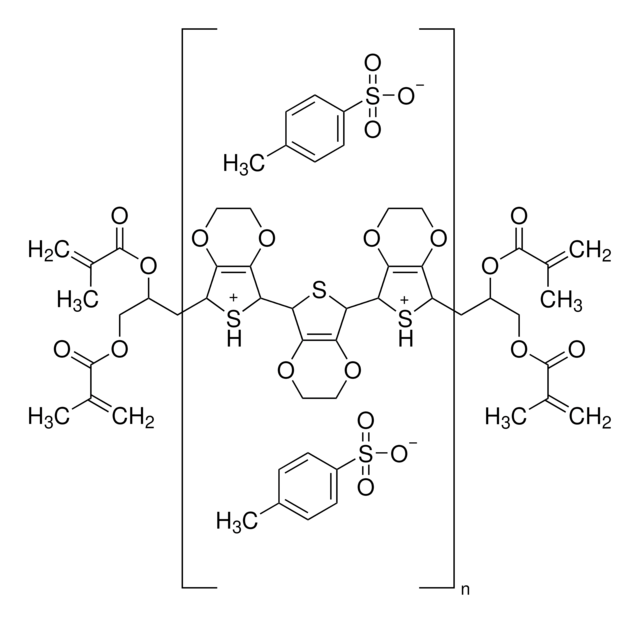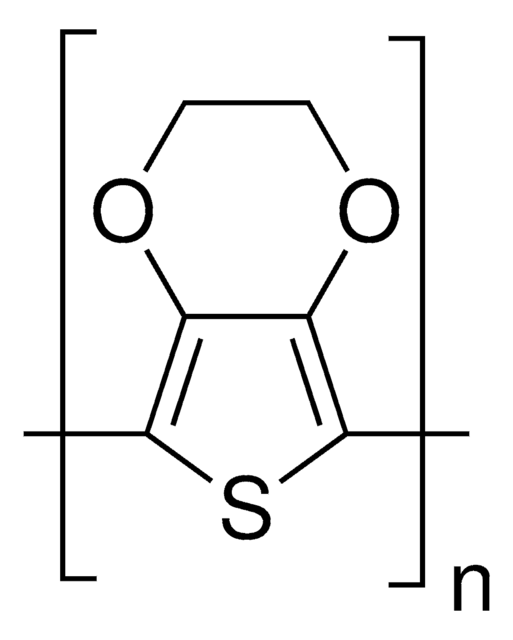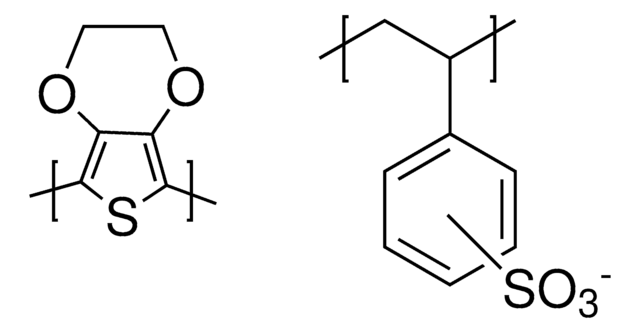649805
Poly(3,4-ethylenedioxythiophene)-block-poly(ethylene glycol) solution
1 wt % dispersion in nitromethane, contains perchlorate as dopant
Synonyme(s) :
Aedotron™ C-NM
About This Item
Produits recommandés
Contient
perchlorate as dopant
Niveau de qualité
Concentration
1 wt % dispersion in nitromethane
Résistance
10,000-100,000 Ω/sq (spin cast thin films: typically 1-3 layers spun at 1,000 rpm)
Travail d'extraction
4.33 eV
Description
40 nm (RMS roughness spin cast thin films)
Taille des particules
600-1000 nm (in suspension)
Conductivité
0.1-5.0 S/cm (bulk)
Densité
1.127 g/mL at 25 °C
Vous recherchez des produits similaires ? Visite Guide de comparaison des produits
Catégories apparentées
Description générale
Application
Attention
Informations légales
Mention d'avertissement
Warning
Mentions de danger
Conseils de prudence
Classification des risques
Acute Tox. 4 Inhalation - Acute Tox. 4 Oral - Carc. 2 - Flam. Liq. 3 - Repr. 2
Code de la classe de stockage
3 - Flammable liquids
Classe de danger pour l'eau (WGK)
WGK 2
Point d'éclair (°F)
96.8 °F - closed cup
Point d'éclair (°C)
36 °C - closed cup
Certificats d'analyse (COA)
Recherchez un Certificats d'analyse (COA) en saisissant le numéro de lot du produit. Les numéros de lot figurent sur l'étiquette du produit après les mots "Lot" ou "Batch".
Déjà en possession de ce produit ?
Retrouvez la documentation relative aux produits que vous avez récemment achetés dans la Bibliothèque de documents.
Les clients ont également consulté
Articles
New conducting and semiconducting polymers for plastic electronics
The application of conducting polymers at the interface with biology is an exciting new trend in organic electronics research.
Notre équipe de scientifiques dispose d'une expérience dans tous les secteurs de la recherche, notamment en sciences de la vie, science des matériaux, synthèse chimique, chromatographie, analyse et dans de nombreux autres domaines..
Contacter notre Service technique







